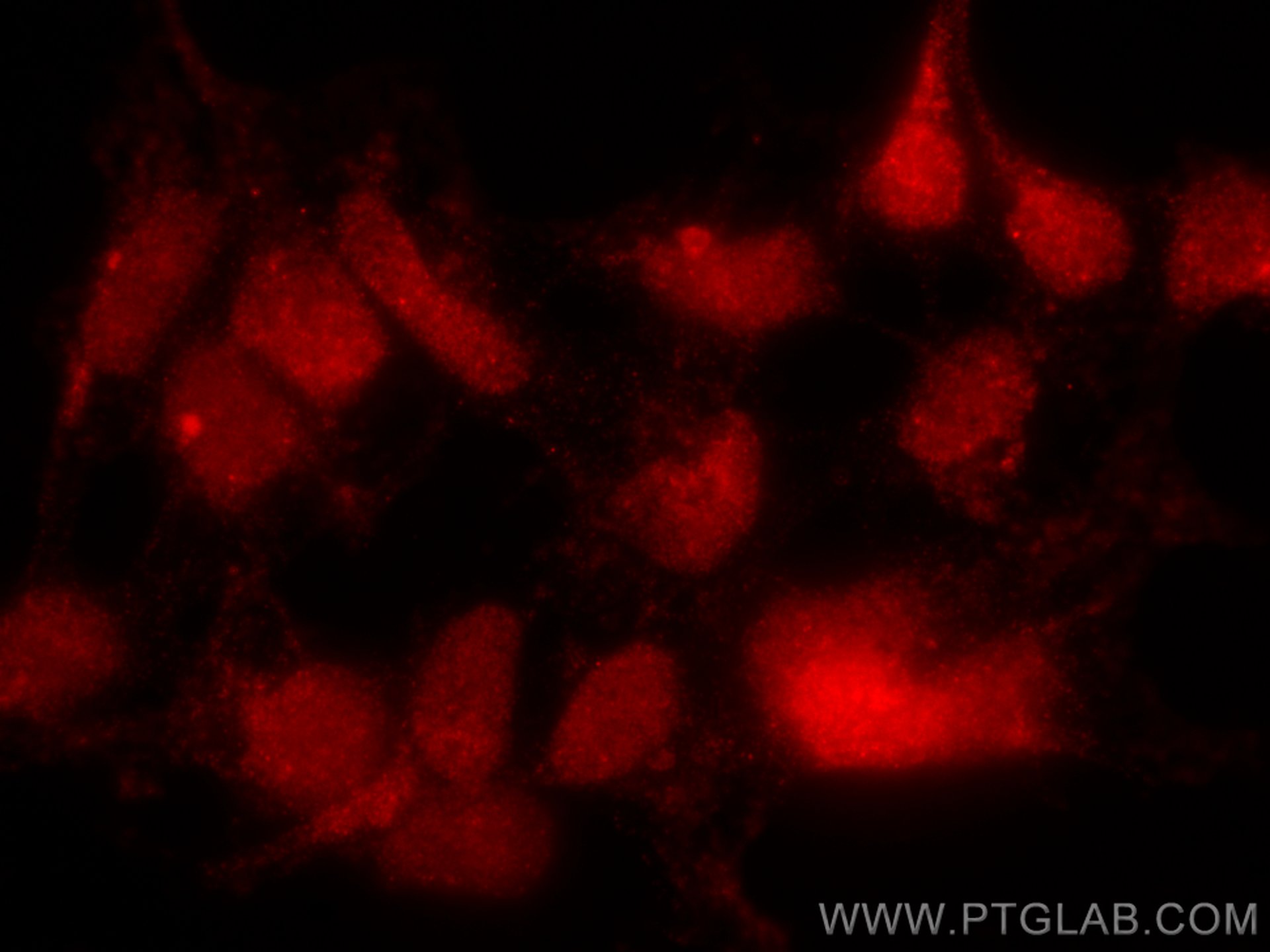Validation Data Gallery
Filter:
Tested Applications
| Positive IF/ICC detected in | HEK-293 cells |
Recommended dilution
| Application | Dilution |
|---|---|
| Immunofluorescence (IF)/ICC | IF/ICC : 1:50-1:500 |
| It is recommended that this reagent should be titrated in each testing system to obtain optimal results. | |
| Sample-dependent, Check data in validation data gallery. | |
Product Information
CL594-66374 targets TINP1 in IF/ICC applications and shows reactivity with human samples.
| Tested Reactivity | human |
| Host / Isotype | Mouse / IgG1 |
| Class | Monoclonal |
| Type | Antibody |
| Immunogen | TINP1 fusion protein Ag8822 相同性解析による交差性が予測される生物種 |
| Full Name | TGF beta-inducible nuclear protein 1 |
| Calculated molecular weight | 260 aa, 30 kDa |
| Observed molecular weight | 34 kDa |
| GenBank accession number | BC005288 |
| Gene Symbol | TINP1 |
| Gene ID (NCBI) | 10412 |
| RRID | AB_2934724 |
| Conjugate | CoraLite®594 Fluorescent Dye |
| Excitation/Emission maxima wavelengths | 588 nm / 604 nm |
| Form | Liquid |
| Purification Method | Protein G purification |
| UNIPROT ID | O95478 |
| Storage Buffer | PBS with 50% Glycerol, 0.05% Proclin300, 0.5% BSA, pH 7.3. |
| Storage Conditions | Store at -20°C. Avoid exposure to light. Stable for one year after shipment. Aliquoting is unnecessary for -20oC storage. |
Background Information
TINP1 (TGF beta inducible nuclear protein 1) was widely expressed in various cell lines. TINP1 overexpression significantly promoted tumor cell proliferation, which may be associated with the downregulation of p53 expression. Furthermore, TINP1 promoted a number of cell lines to the S phase of the cell cycle. TINP1 promotes cell proliferation and significantly reduces p53 and p21 expression.
Protocols
| Product Specific Protocols | |
|---|---|
| IF protocol for CL594 TINP1 antibody CL594-66374 | Download protocol |
| Standard Protocols | |
|---|---|
| Click here to view our Standard Protocols |
